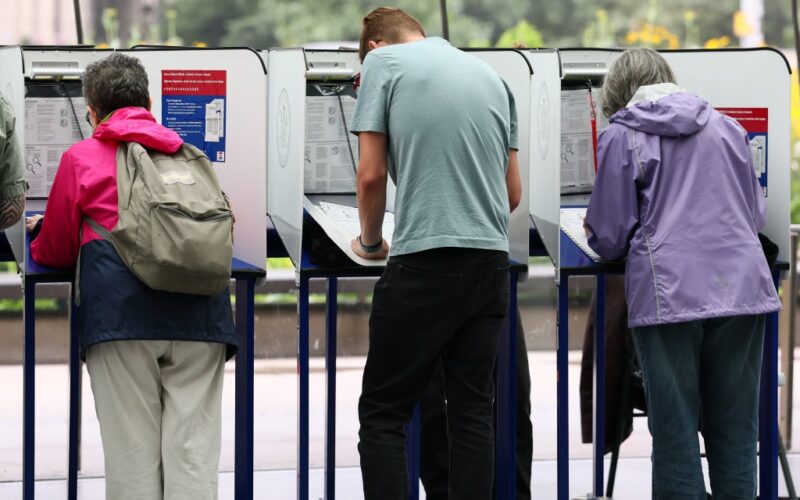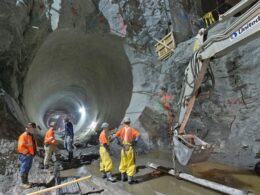This fall, New Yorkers will vote on four housing-related ballot measures that address two primary causes of the city’s housing shortage: it takes too long to build housing, and it’s too easy to block it. Created by the Charter Revision Commission, these proposals aim to fast-track affordable housing and ensure it’s approved citywide — not just in select neighborhoods.
The centerpiece is Question 2, which would create a fast track for city-sponsored affordable housing. This would allow projects that require rezonings to go directly to the Board of Standards and Appeals, rather than through the Uniform Land Use Review Procedure (ULURP) — the city’s current process that requires multiple layers of review and often takes years to complete.
Additionally, in the 12 Community Board districts that have produced the least affordable housing over the past five years, projects would instead advance with approval from the City Planning Commission, ensuring momentum without waiting for additional Council action.
The scale of the problem is staggering. Between 2014 and 2024, nearly 20,000 units of affordable housing went through ULURP. Many of these projects took multiple years to get through the process before construction could even begin. During this time, rents rose, construction costs escalated, and New Yorkers were left without homes they could afford. This is simply unacceptable.
Question 2 would break this cycle of delays and inaction by setting clear timelines and reducing political bottlenecks, allowing affordable housing to be delivered when it is most needed, rather than years too late, or even worse, not at all.
The reforms also address a long-standing imbalance created by “member deference,” the Council’s practice of deferring to local members on land use. While this can bring valuable community input, it has also produced highly uneven results.
Over the past 11 years, 10 Council districts have each delivered more than 4,000 affordable homes, with three exceeding 7,000. Yet, 10 other districts produced fewer than 300 units, and five produced fewer than 100. In total, just 10 districts accounted for more than half of the city’s affordable housing. Question 2 would help ensure that every neighborhood contributes to meeting the citywide housing need by more equitably distributing affordable homes across the five boroughs.
Question 4 adds another safeguard by creating an Affordable Housing Appeals Board, made up of the mayor, a borough president, and a City Council member. With two votes, the board could overturn Council decisions that block or significantly weaken affordable housing projects. This keeps the Council in the process, while ensuring that local politics do not stand in the way of homes New Yorkers urgently need.
Additionally, Question 3 would accelerate approvals for smaller housing and infrastructure projects, cutting red tape that too often slows even modest developments. And Question 5 would modernize city planning by requiring a comprehensive digital mapping system. Together, Questions 2 through 5 form a balanced reform package that would make housing approvals faster and fairer at a time when they’re needed most.
It’s important to note that while they would make critical improvements to the current housing system, these reforms would not dismantle it. The approval process for large neighborhood rezonings, like Gowanus or Midtown South, and for most market-rate development would remain unchanged. What Question 4 introduces is a necessary backstop. The Council would still be able to negotiate improvements and secure community benefits, but it would no longer stall affordable housing indefinitely.
These measures also do not diminish the Council’s broader role in advancing affordability. In recent years, the Council has pushed beyond the mayor’s agenda by passing the Fair Housing Framework, increasing capital funding for housing, expanding CityFHEPS rental assistance, and supporting the City of Yes for Housing Opportunity zoning changes. These legislative and budgetary powers remain untouched.
Ultimately, the problem lies squarely in land use. When the 1989 Charter Commission gave the Council a role in ULURP, it was intended to be the exception — not the rule. Over time, it has become a chokepoint where projects are delayed, watered down, or blocked outright. That obstruction is one reason New York now faces a historically low rental vacancy rate of just 1.4% and why working class families are increasingly priced out of their neighborhoods.
If New York is serious about solving its housing crisis, we must modernize our approval process. New Yorkers can stop delays and spread affordable housing more equitably throughout the city by voting “yes” on Questions 2, 3, 4, and 5.
It’s time to choose progress over gridlock.
Fee is the executive director of the New York Housing Conference.








